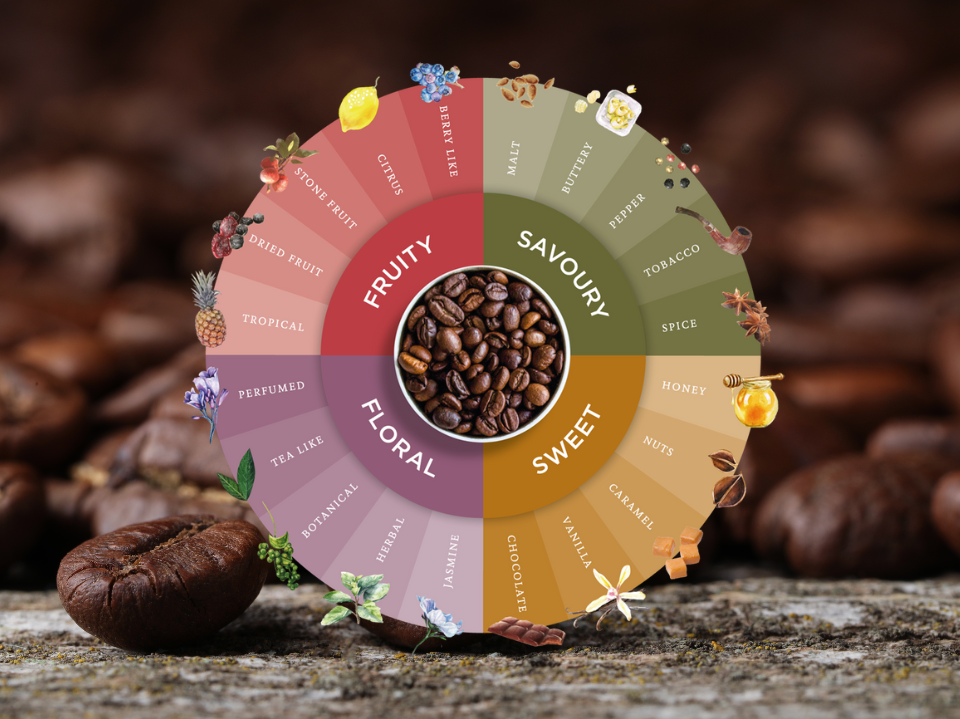Do you consider yourself an avid fan of coffee? Are you constantly trying different brands, beans, and flavours just for the enjoyment of it all?
If so, then you might fall in love with the art of coffee cupping; a practice that is used to observe and appreciate the taste and aroma of each fresh brew.
What is the Coffee Cupping Procedure?
Coffee cupping (also known as coffee tasting) involves more than just your tastebuds… it’s about engaging your mind in the process.
By taking deep, slow inhales of the scent of your coffee and consuming it slowly, you increase your enjoyment of every sip.
Then, instead of drinking straight from the cup when the water is still boiling, you let your coffee sit for a few minutes to maximise the flavour.
There are six guidelines involved in the cupping process for wet coffee cupping - including Aroma, Clean Cup, Body, Acidity, Balance and Flavour/Aftertaste. Each profile is scored from 1 to 5 to achieve a final cupping score.
The Role of Single-Origin Coffee in Coffee Cupping
Although coffee cupping can technically be done with any bean variety, there’s no denying that the best results are produced from single-origin coffee labels.
See, when you use a supermarket-sourced blend, you won’t have the same richness and vibrancy of the coffee-tasting notes.
When brewed, single-origin coffee has a consistent and bold flavour profile that makes it perfect for coffee cupping.
Understanding The Flavour Profiles of Single-Origin Coffee
The different single-origin coffee options on the market are incredibly versatile. Their taste is impacted by the conditions the beans were grown in, including:
- location
- climate
- soil variety
As such, different labels can be fruity and acidic, nutty and sweet, or dark and silky.
Depending on your personal preferences, it might take you a few coffee-cupping rounds to find your favourite. A handy tool to help you identify flavours during the cupping process is known as a Coffee Flavour Wheel, which helps identify between Fruity, Savoury, Floral or Sweet notes.
How to Do Coffee Tasting at Home (Simplified)
Once you’ve purchased a variety of single-origin coffee to compare, it’s time to indulge.
- Step 1. Gather a grinder, teaspoons, and a selection of similar-sized mugs.
- Step 2. Grind each of the beans into a coarse powder, keeping them separate from one another.
- Step 3. Pinch the granules between your fingers, inhaling the dry aroma as you divide the servings.
- Step 4. Heat your water to just below the boiling point, at around 93° celsius.
- Step 5. Pour an equal amount of water into each cup, inhaling the wet aroma of each as you go.
- Step 6. Set a timer for three minutes, allowing a “crust” to form over the top of the coffee.
- Step 7. Use a new spoon to crack each coffee layer, removing the remaining coffee grounds at the same time.
- Step 8. Wait another 10-15 minutes.
- Step 9. Slowly sip each coffee, slurping it to spread the taste over your tongue.
- Step 10. Consider the flavour and the aftertaste, identifying your favourite and noting it down.
It’s really that simple.
Tasting Single-Origin Coffee through Coffee Cupping
By taking each step slowly and evaluating the smell, flavour and aftertaste of each coffee you taste, you’ll be able to immerse yourself in a beautiful and explorative experience.
Each label is going to have unique characteristics, so don’t rush the coffee-tasting process. Enjoy it and make it last. Who knows what you might discover?
To get started with coffee cupping today, order a range of speciality coffee from Di Stefano. We source our beans ethically, paying great attention to each bean’s origin to guarantee the best flavour.



